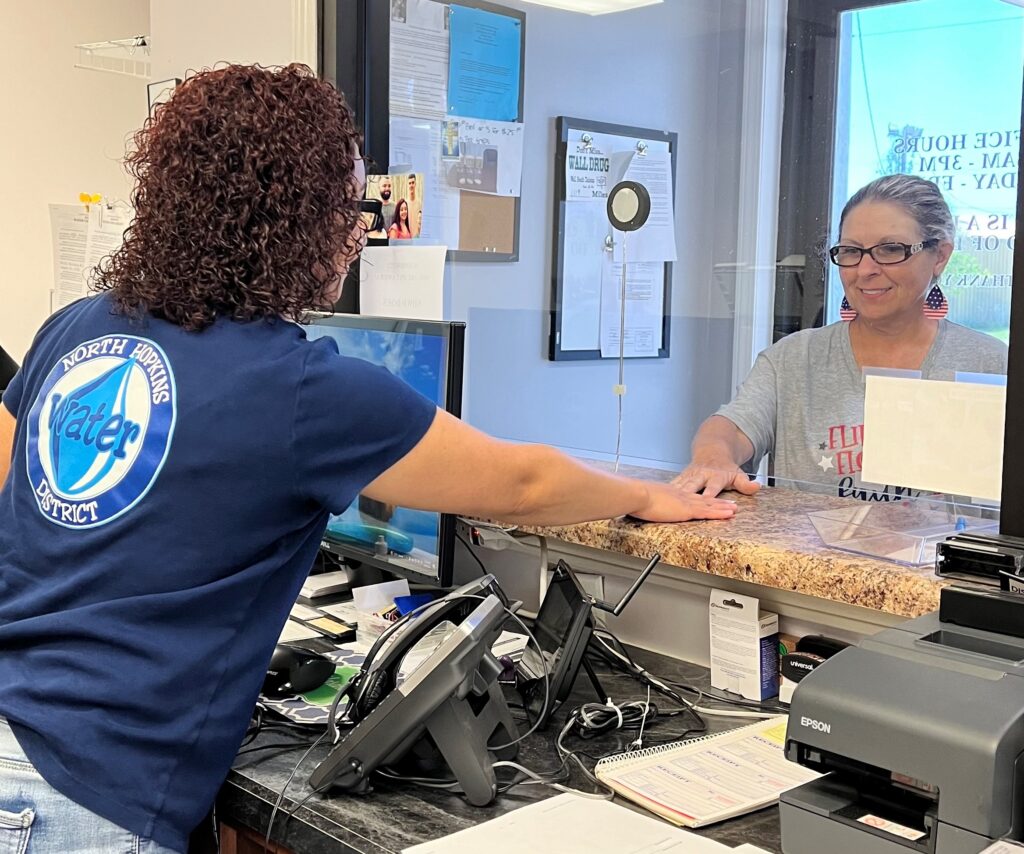Location
-
316 Liberty Church Loop
Madisonville, KY 42431
Hours
-
8 AM - 3 PM
Monday - Friday
If you have received an unusually high water bill, there could be a leak somewhere in your home. Usually, you can do it yourself and save some money. This is a step by step guide to finding leaks in your home.
Step 1 – Things you will need before you start:
Flashlight.
Paper Towel.
Red or Blue Food Coloring or Dye Tablets.
Make sure there are no faucets, toilets or other water using fixtures being used inside the home.
Step 2 – Your Water Meter
Locate your water meter. It is usually located near the street on the front of your property. Open the lid and examine the face of the meter.
Make note of the digital meter reading. The reading should be the same, or higher, than your last reading indicated on your most recent water bill. If the current reading is lower than what is indicated on your most recent bill, your meter could have been read incorrectly.
Next, look at the leak detector for movement. If there is water passing through your meter, the leak detector will be turning counter-clockwise. The more water that flows through the meter, the faster the leak detector will turn. For slight leaks, you may have to watch the leak detector for a few minutes to note movement.
Step 3 – Your Bathroom
In most households, over 75% of entire water usage is in the bathroom.
Here is what to look for…
Your toilet(s) can be the biggest source of water waste in your home. A toilet that constantly leaks loud enough for you to hear can waste hundred of gallons of water each day. Also, you cannot always hear or see leaks in your toilet. Here is a proven way to check your toilets for leaks:
Remove the lid from the tank, or the back, of the toilet. Put your ear close to the tank. If you hear a trickle or a hissing sound, you may have a leak. Place two dye tablets or 5-8 drops of food color into the tank of the toilet and wait 15-20 minutes. Do not flush the toilet during this test. After 15-20 minutes, look into the bowl of the toilet. If the color starts to develop in the bowl, there is a leak in your toilet and it must be repaired.
Usually, installing a new flapper will correct the leak. Also check the water level in the toilet tank. In the middle of the toilet, there is an overflow pipe. The water level should be 1/2 inch below the top of this pipe. If the water level is at the top of this pipe, adjust the water level. If not corrected, water can flow over the top, through the bowl and down the drain.
Visually inspect your lavatory faucet(s) for any drips or leaks. If your lavatory faucet drips, of course, you should make necessary repairs for faucets. Next, look under your lavatory sink and visually inspect the valve connections. Again, if there are any drips, make necessary repairs as soon as possible.
Also, visually inspect your tub/shower faucets for drips or leaks. Again, any leaks should be repaired promptly.
Step 4 – Your Kitchen
Visually inspect your kitchen faucet for any drips or leaks. If your kitchen faucet drips, of course, you should make necessary repairs for faucets. Next, look under your kitchen sink and visually inspect the valve connections. Again, if there are any drips, make necessary repairs as soon as possible.
Your automatic dishwasher only uses about 14 gallons of water per complete cycle. If there are any leaks associated with your dishwasher, repair them immediately.
The clothes washer can develop leaks at the valve connections or in the hoses. Visually inspect these items for any leaks or drips.
Step 5 – Here are other important items to check in your home:
Check your water heater for any valve leaks (pressure relief and main valves).
Visually inspect outdoor faucets for leaks.
If you have an irrigation system, frequently inspect all valves and connection for leaks.
